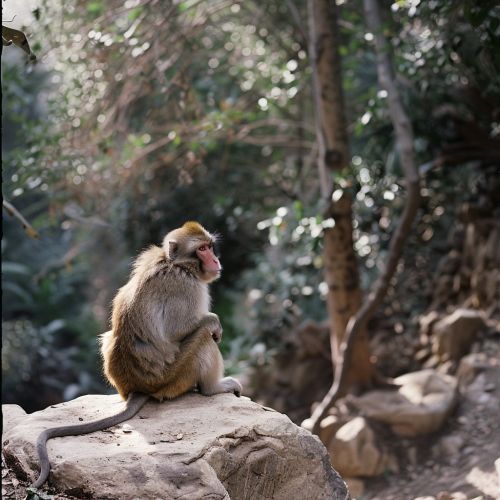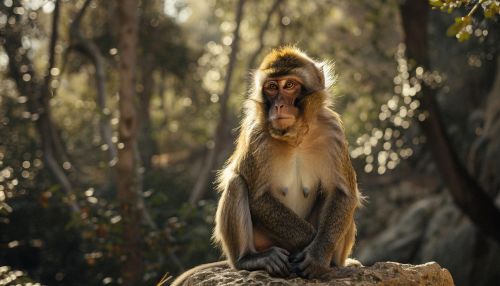Barbary Macaque
Taxonomy and Evolution
The Barbary macaque (Macaca sylvanus), also known as the Barbary ape or magot, is a species of macaque endemic to the Atlas Mountains of Algeria and Morocco along with a small population of unknown origin in Gibraltar. It is the only macaque species found outside of Asia and the only primate species found north of the Sahara in Africa. Despite being referred to as an "ape", the Barbary macaque lacks the tail typically associated with monkeys, leading to this misnomer.


The Barbary macaque is of particular interest because males play an atypical role in rearing young. Males are the primary caregivers of the young, a role usually filled by females in most primate species. This may be a result of their unique social structure.
Description
The Barbary macaque is a relatively large monkey, with males weighing up to 16 kg (35 lb) and females up to 13 kg (29 lb). They have a body length of 45 to 75 cm (18 to 30 in) and a vestigial tail that is not visible externally. Their fur is multicolored, being a blend of dark-brown, light-brown, and yellowish.
Behavior
Barbary macaques demonstrate a unique social structure within the primate world. They live in mixed-sex groups, and males are highly involved in caring for the young. This is unusual among the Old World monkeys and apes, where typically the mother is the primary caregiver.
Distribution and Habitat
The Barbary macaque inhabits various types of forests, including both evergreen and oak forests in the Atlas and Rif Mountain ranges. They are also found in cedar forests in the Middle Atlas range and limestone plateaus in Algeria.
Conservation Status
The Barbary macaque is listed as endangered under the IUCN Red List and is protected by local and international laws. The main threats to the species are habitat loss due to logging and overgrazing, and capture for the pet trade.
